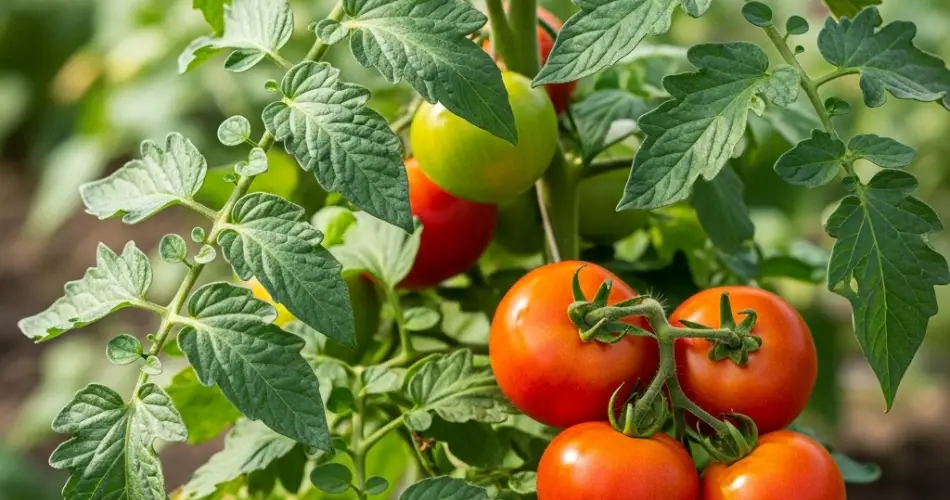Tomato plants are a staple in many gardens, known for their delicious fruits and relatively straightforward care. Gardeners often seek ways to naturally improve the growth and yield of their tomato plants without relying on synthetic fertilizers. One surprising and effective method gaining attention is feeding tomato plants with oats. Yes, the humble oat grain, typically known as a breakfast staple, can do wonders for your tomato plants’ health and productivity.
In this article, we’ll explore why oats are beneficial to tomato plants, how to use them properly, and what unexpected results you can expect by adding oats to your tomato care routine.
Why Oats?
Oats are packed with nutrients that are beneficial to plants and soil health. They contain essential minerals such as potassium, calcium, magnesium, and phosphorus, which are vital for strong plant growth and fruit development. Additionally, oats provide organic matter that improves soil structure and moisture retention.
Oats also support beneficial soil microbes. These microbes play a crucial role in breaking down organic material and releasing nutrients in a form that plants can absorb. By feeding oats to tomato plants, you are indirectly encouraging a thriving soil ecosystem that promotes healthier, more vigorous plants.
How Oats Benefit Tomato Plants
1. Enhanced Nutrient Supply
When oats decompose, they release a slow, steady stream of nutrients, ensuring the tomato plants receive constant nourishment over time. This slow-release effect prevents nutrient spikes or deficiencies.
2. Improved Soil Moisture Retention
Oat residues increase the soil’s ability to retain water. This is particularly helpful during dry spells, reducing water stress on tomato plants and helping maintain steady growth.
3. Stimulated Root Growth
A healthy soil environment fostered by oats encourages stronger and deeper root systems. Robust roots enable tomato plants to absorb more water and nutrients, which in turn supports bigger and better fruit production.
4. Better Resistance to Stress and Diseases
Oats encourage beneficial microbes that compete with harmful pathogens, reducing the likelihood of soil-borne diseases. Additionally, the improved soil condition helps tomato plants better tolerate environmental stresses like drought or heat.
How to Feed Oats to Tomato Plants
There are a few practical ways to incorporate oats into your tomato garden:
-
Mix Oats Into the Soil: Before planting, mix dry, crushed oats or oatmeal into the soil at a rate of about 1 cup per square foot. Lightly work it into the top layer to avoid disturbing seedlings later.
-
Make Oat Water: Soak 1 cup of oats in 2-3 liters of water for 24 hours, then strain the liquid and use it to water your tomato plants. This provides a gentle nutrient infusion directly to the roots.
-
Use Oat Mulch: Spread a thin layer of crushed oats around the base of tomato plants as mulch. This not only feeds the soil but also helps retain moisture and suppress weeds.
By applying oats at the right times and in proper amounts, you can enjoy their full benefits without risking nutrient imbalances.
When to Use Oats for Tomato Plants
-
Pre-Planting: Incorporate oats into the soil a week or two before planting tomato seedlings. This helps prepare the soil by improving fertility and structure.
-
Growing Season: Use oat water every 1-2 weeks as a supplemental feed for growing tomato plants.
-
Mulching: Replenish oat mulch as it decomposes during the growing season to maintain nutrient supply and moisture retention.
Surprising Results from Feeding Tomato Plants with Oats
Many gardeners who have tried oats report impressive and unexpected benefits:
-
Faster Growth: Tomato plants treated with oats often grow more vigorously, with lush green foliage and stronger stems.
-
Increased Flowering and Fruit Set: Oats can stimulate earlier flowering and more abundant fruit production, improving overall yields.
-
Better Flavor: Tomatoes grown in oat-enriched soil tend to have a richer and sweeter taste, enhancing the eating experience.
-
Reduced Pest Problems: Healthier plants are naturally more resistant to common pests and diseases, minimizing the need for chemical interventions.
Additional Tips for Growing Healthy Tomatoes
To maximize the benefits of feeding oats, remember to:
-
Provide ample sunlight — tomato plants need at least 6-8 hours of direct sunlight daily.
-
Water consistently, keeping the soil moist but not waterlogged.
-
Support plants with stakes or cages to prevent breakage.
-
Practice crop rotation and avoid planting tomatoes in the same spot year after year to reduce disease risk.
Final Thoughts
Feeding your tomato plants with oats is an easy, natural, and surprisingly effective way to boost their growth, health, and productivity. Oats not only improve soil quality but also encourage a thriving soil ecosystem, which benefits your tomato plants in multiple ways.
If you are looking for a low-cost and eco-friendly alternative to chemical fertilizers, oats could be the simple solution you need. Incorporate this unconventional method into your gardening routine and watch your tomato plants thrive like never before.
Try feeding your tomato plants oats this season and prepare to be amazed by the results!



